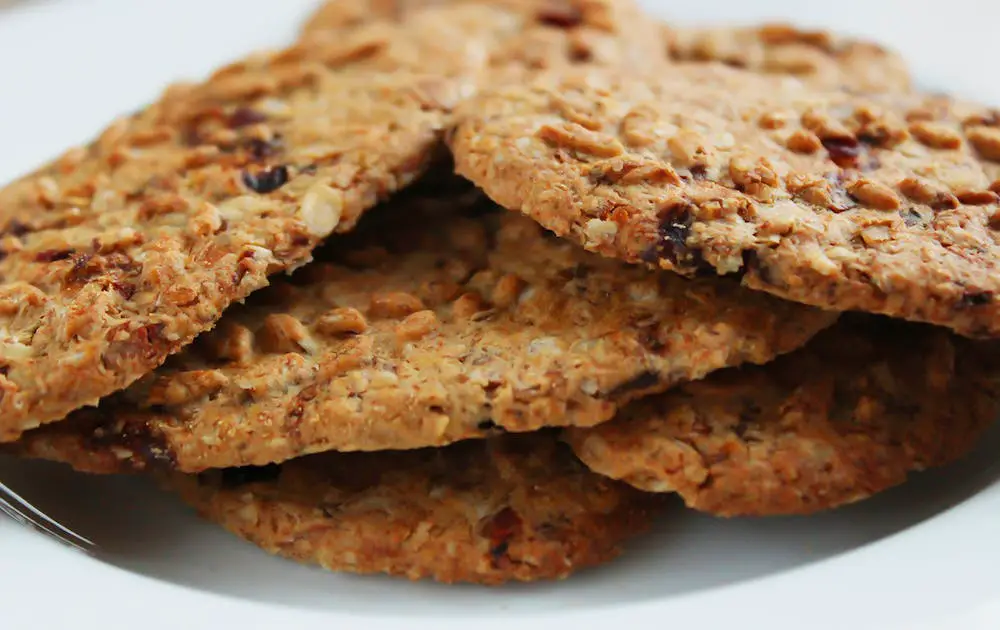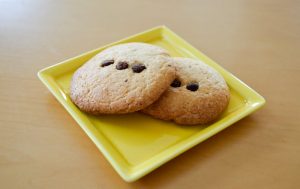Healthy cookies are a delightful twist on traditional sweet treats, offering a guilt-free indulgence for those mindful of their dietary choices. Unlike standard cookies, which often contain high amounts of refined sugars, unhealthy fats, and processed flours, healthy cookies are crafted with nutrient-rich ingredients. They prioritize whole foods like oats, nuts, and natural sweeteners such as honey or maple syrup. These cookies are not just about subtracting the bad; they’re about adding the good—incorporating elements that provide essential nutrients, fiber, and healthy fats. The idea is to enjoy a cookie that satisfies your sweet tooth while also contributing positively to your overall health. This approach to baking caters to various dietary needs, including gluten-free, vegan, and low-calorie diets, making healthy cookies a versatile choice for anyone looking to enjoy a treat without compromising on health and wellness.
Understanding Ingredients
The journey to making a cookie healthy begins with a careful selection of ingredients. Traditional cookie recipes often rely on refined flour, sugar, and fats, which, while tasty, offer little nutritional value. In contrast, healthy cookies use alternatives that not only enhance the flavor but also boost the nutritional profile. Let’s delve into the key components that transform ordinary cookies into healthier treats.
Flour Alternatives: Oat and Almond
Flour is the backbone of any cookie, but in healthy cookies, traditional white flour is often replaced with more nutritious options. Oat flour, made by simply grinding oats, is a popular choice. It’s not only gluten-free (if made from certified gluten-free oats) but also rich in fiber, which aids in digestion and provides a feeling of fullness. Oat flour imparts a mild, slightly nutty flavor, making it a versatile base for various cookie types.
Almond flour is another excellent alternative, especially for those following a low-carb or gluten-free diet. Made from finely ground almonds, this flour is high in protein, healthy fats, and vitamin E, an antioxidant. Almond flour adds a rich, buttery flavor and a tender texture to cookies, making them irresistibly delicious.
Sweetener Options: Honey and Maple Syrup
Moving away from refined sugars, healthy cookies often incorporate natural sweeteners like honey and maple syrup. These sweeteners are not just about adding sweetness; they also bring their own unique flavors and nutritional benefits. Honey, known for its antibacterial properties, adds a floral sweetness to cookies. Maple syrup, a vegan-friendly option, provides a subtle caramel-like flavor along with minerals like manganese and zinc.
Healthy Fats: Coconut Oil and Nut Butters
Fats are essential in cookie recipes for texture and flavor. In healthy cookies, the focus is on fats that provide health benefits. Coconut oil is a popular choice, known for its medium-chain triglycerides (MCTs), which are believed to support metabolism. It adds a light, tropical flavor to cookies. Nut butters, such as almond or peanut butter, are also excellent options. They contribute not only healthy fats but also protein, making the cookies more satiating.
In conclusion, the ingredients in healthy cookies are carefully chosen to enhance both the nutritional value and the taste experience. By incorporating flour alternatives, natural sweeteners, and healthy fats, these cookies become a nourishing treat that can be enjoyed without guilt.
For those interested in exploring more about the versatility of ingredients in baking, the article on “What Are the Ingredients in Brownie Mix?” offers insightful comparisons.
What makes a cookie ‘healthy’?
Healthy cookies are typically made with whole, nutrient-rich ingredients like oats, nuts, and natural sweeteners. They avoid processed flours, refined sugars, and unhealthy fats.
Can I make healthy cookies without sugar?
Yes, you can use natural sweeteners like honey, maple syrup, or ripe bananas to sweeten your cookies without using refined sugar.
Are healthy cookies suitable for weight loss?
While healthier than traditional cookies, moderation is key. They can be part of a weight-loss diet if consumed in controlled portions.
How can I make my cookies gluten-free?
Use gluten-free flour alternatives like almond flour, coconut flour, or gluten-free oat flour.
What is the healthiest type of cookie?
The healthiest type of cookie is typically one that is made with whole, unprocessed ingredients. Look for cookies made with whole grains like oats or almond flour, natural sweeteners like honey or maple syrup, and healthy fats like coconut oil or nut butters. Additionally, cookies that incorporate nuts, seeds, or fruits can offer additional nutritional benefits. Avoid cookies with refined sugars, artificial additives, or trans fats.
Why are cookies so good for you?
While traditional cookies with high sugar and fat content are not considered particularly healthy, cookies made with nutritious ingredients can offer some health benefits. These include providing energy, essential nutrients, and fiber. For instance, oatmeal cookies made with whole oats can be a good source of fiber, while cookies with nuts can provide healthy fats and protein. However, it’s important to consume them in moderation as part of a balanced diet.
Is an oatmeal cookie healthy?
An oatmeal cookie can be healthy if it’s made with wholesome ingredients. Oats are a good source of fiber, especially beta-glucan, which is known for its heart health benefits. If the cookie is made with minimal added sugars and healthy fats, it can be a nutritious snack option. However, the healthiness of an oatmeal cookie ultimately depends on the other ingredients used and the overall sugar and fat content.
Are homemade cookies healthy?
Homemade cookies can be healthier than store-bought ones because you have complete control over the ingredients. By choosing healthier ingredients and reducing the amount of sugar and unhealthy fats, you can make cookies that are more nutritious. Using whole grains, natural sweeteners, and incorporating nuts, seeds, or fruits can significantly boost the nutritional profile of your homemade cookies.
Can I make healthy cookies vegan?
Absolutely. Substitute eggs with flax eggs, dairy butter with plant-based oils or vegan butter, and use dairy-free chocolate.
What are some healthy add-ins for cookies?
Nuts, seeds, dried fruits, dark chocolate chips, and spices like cinnamon are great options.
How long do healthy cookies last, and how should I store them?
Store them in an airtight container at room temperature for up to a week, or refrigerate for a longer shelf life.
Can I freeze healthy cookies?
Yes, most healthy cookies freeze well. Store them in a freezer-safe container or bag.
Conclusion
In summary, the world of healthy cookies opens up a delightful avenue for those seeking to indulge their sweet tooth while still prioritizing their health and wellness. By understanding the key components that make cookies healthier, such as using whole grain flours, natural sweeteners, and healthy fats, we can transform this classic treat into a nutritious snack option. The versatility of healthy cookies is evident in the wide array of recipes available, catering to various dietary needs and preferences, from gluten-free to vegan.
Moreover, the art of baking healthy cookies is not just about substituting ingredients; it’s about embracing a new perspective on what a cookie can be. It’s an opportunity to experiment with flavors and textures while reaping the benefits of more wholesome ingredients. The nutritional advantages of these cookies, when compared to their traditional counterparts, are significant, offering a way to enjoy a treat without the usual drawbacks of high sugar and unhealthy fats.
The joy of baking and enjoying these cookies lies in the balance they strike between indulgence and nutrition, making them a perfect example of how delicious and health-conscious choices can coexist harmoniously in our diets.
Print
Healthy Cookies
- Total Time: 27 minutes
- Yield: 24 cookies 1x
- Diet: Gluten Free
Description
Transform traditional cookies into a healthier, nourishing treat by using wholesome ingredients like oat flour, almond flour, natural sweeteners, and healthy fats. Irresistibly delicious with added nutritional benefits. 🌱🍪
Ingredients
- 2 cups oat flour 🌾
- 1 cup almond flour 🌰
- 1/2 cup coconut oil, melted 🥥
- 1/4 cup nut butter (almond or peanut) 🥜
- 1/2 cup honey 🍯
- 1/4 cup maple syrup 🍁
- 1 teaspoon vanilla extract 🌿
- 1/2 teaspoon baking soda 🧂
- Pinch of salt 🌊
Instructions
- Preheat the oven to 350°F (180°C) and line a baking sheet with parchment paper.
- In a large bowl, combine oat flour, almond flour, baking soda, and a pinch of salt.
- In a separate bowl, whisk together melted coconut oil, nut butter, honey, maple syrup, and vanilla extract.
- Pour the wet ingredients into the dry ingredients and mix until well combined.
- Scoop tablespoon-sized portions of the dough and roll them into balls. Place them on the prepared baking sheet, leaving space between each.
- Flatten each cookie slightly with the back of a spoon or your fingertips.
- Bake in the preheated oven for 10-12 minutes or until the edges are golden brown.
- Allow the cookies to cool on the baking sheet for a few minutes before transferring them to a wire rack to cool completely.
Notes
- Experiment with adding nuts, seeds, or dark chocolate chips for extra texture and flavor.
- For a chewier texture, refrigerate the cookie dough for 30 minutes before baking.
- Prep Time: 15 minutes
- Cook Time: 12 minutes
- Category: Dessert
- Method: Baking
- Cuisine: Healthy
Nutrition
- Serving Size: per cookie
- Calories: 120
- Sugar: 6g
- Sodium: 50mg
- Carbohydrates: 12g
- Fiber: 2g
- Protein: 3g




